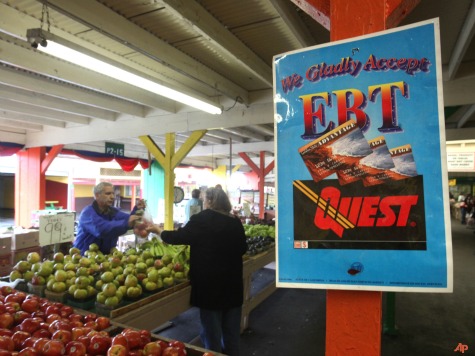
Just one month after passage of the 2014 farm bill designed to slim food stamp payments, governors in six states have found a way to to keep hundreds of millions of dollars flowing to food stamp recipients, a sum that could total more than $8 billion over the next decade.
“Since the passage of the farm bill, states have found ways to cheat, once again, on signing up people for food stamps,” said Speaker John Boehner (R-OH). “And so I would hope that the House would act to try to stop this cheating and this fraud from continuing.”
The maneuver involves something known as the “heat and eat” loophole, which allows anyone who qualifies for the Low Income Home Energy Assistance Program (LIHEAP) to automatically be eligible for the food stamp program’s utility allowance, thereby boosting food stamp benefits. A provision in the 2014 farm bill increased the LIHEAP trigger from $1 to $20. The Congressional Budget Office said that would save taxpayers more than $8 billion over the next decade.
However, the governors of New York, Connecticut, Rhode Island, Pennsylvania, Montana, and Oregon have simply increased their LIHEAP payments to $20 to bag the additional food stamp funds. The Wall Street Journal dubbed the trick “cheat and eat.”
California, Wisconsin, and Vermont are also considering using the maneuver to score more food stamp money.
New York Governor Andrew Cuomo said his decision to boost LIHEAP payments to poach more food stamp cash was an example of his “stepping up” to help New Yorkers “get food for themselves and their families.” Cuomo says the maneuver will result in approximately $457 million a year in taxpayer-funded food stamps flowing to New Yorkers.
Rep. Charles Rangel (D-NY) applauded Cuomo’s decision.
“Whoever thinks feeding the hungry and the poor is cheating and fraud must have no heart,” said Rangel.
Last June, conservatives applauded the House defeat of the original version of the farm bill on the grounds it spent too much and pushed for and won a slimmer version. In a matter of weeks, however, states have found a way around the food stamp spending curtailments – one that may erase over $8 billion in savings to taxpayers.
In December 2013, 46,782,047 people received food stamps.

COMMENTS
Please let us know if you're having issues with commenting.